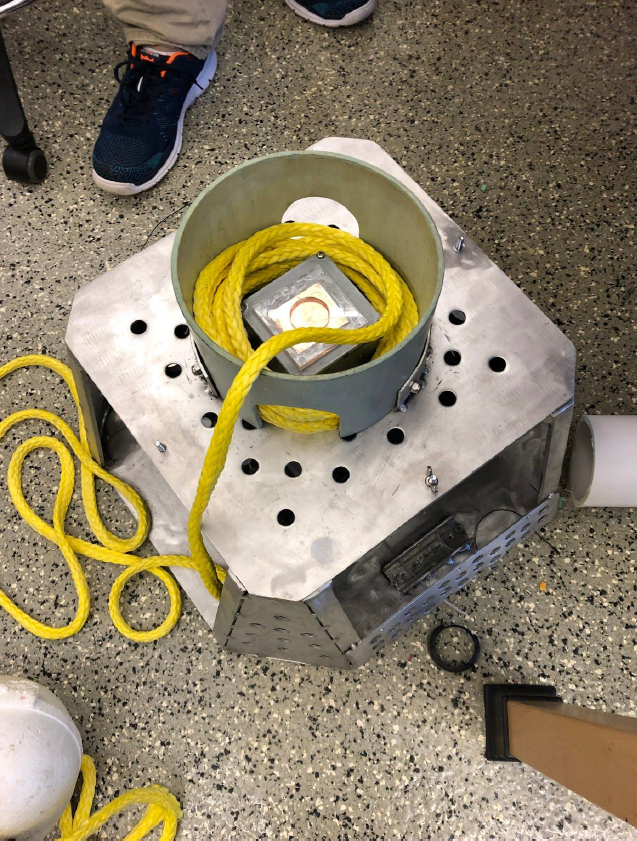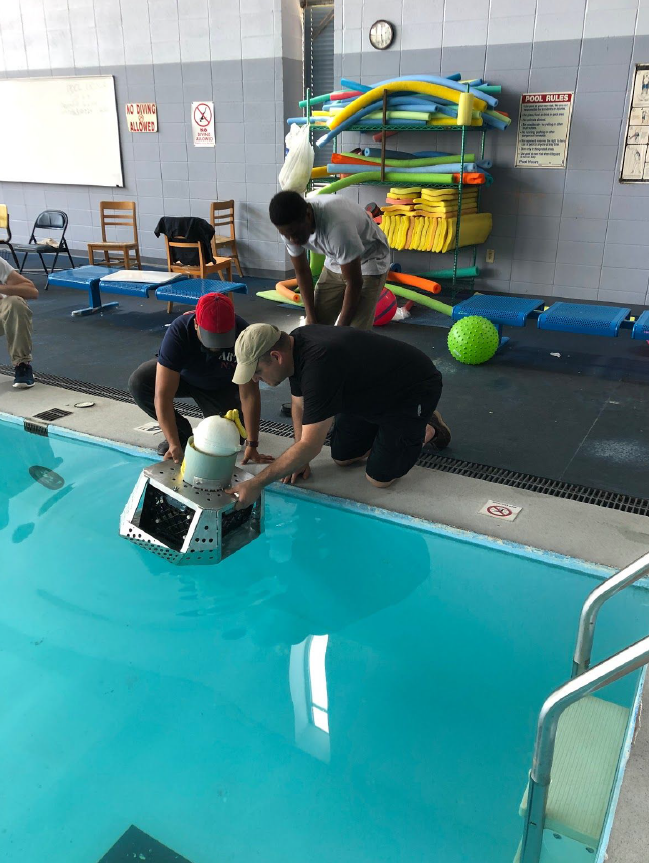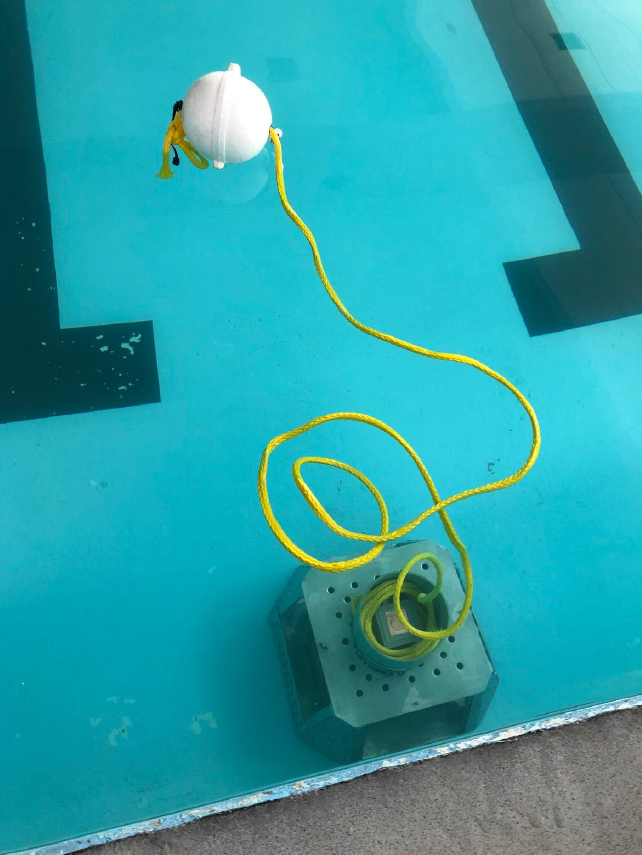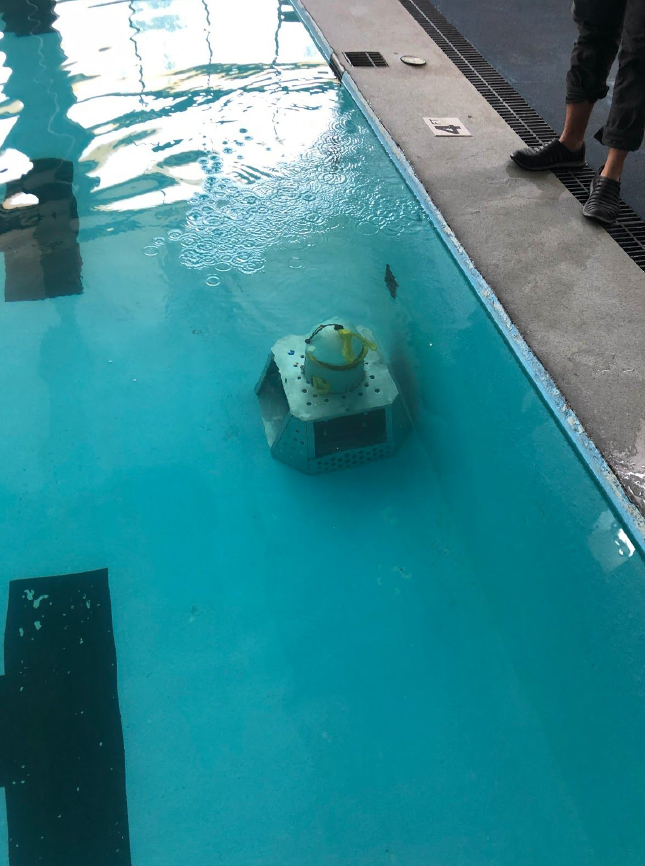Biosensors for the Measurement of Bivalve Valve Movement
Principal Investigators: Kamal Ali, Ali Abu-El Humos, Huiru Shih, Ramzi Kafoury, Francis Tuluri, Sudha Terramilli
Graduate Students: Augustine Ukpebor, MD Mohiuddin Hasan, Johnny Chapman, Otto Ikome, Ahmed Mohamedali, Mohammed Hammad, Mykhailo Syzochemko, Ebrahim Al Areqi, Yonatan Girma
Undergraduate Students: Amanuel Kassaye, Biruk Abate, Albert Boateng, Charity Greenfield, James Addy, Eric Davis, Michael Cameron, Nahu Merawi, Patricia Perry, Patrick Pei, Tim-Owhefere Prince, Taofeek Abayomi, Oluwaseun Akintade, Enoma Ereyimwen, Brandon Brown, Arthur Harden, Yosef Getachew, Jordan Hubbard, Calvin Carter, Omar Elsabrouty
Award Amount: $625,000
Project Description
Goal:
Develop and build a sensor system that can remotely measure and record the valve movement of bivalves. This system will be used in Mississippi Gulf oyster reefs to continuously measure and report the valve gaping of oysters.
Why it is Important:
The health of oyster reefs can be used as a prime indicator of the health of the Gulf. Oysters under stress close their shells as protection against perturbed or hostile aquatic environment and prolonged closure of the valves reflects alarming conditions. Hurricanes, disease, seawater pollutants, and other environmental factors frequently affect oyster reef habitats in the Mississippi Gulf Coast. The decline of oyster reefs due to these stresses is a concern for environmental sustainability, and for coastal managers and industry. Using oysters as biosensors and monitoring is essential in making good decisions on the aquatic real time environmental conditions and in the coastal management system to sustain the oyster reefs from declining.
In the traditional method of monitoring of effluents, surface and other types of water is performed by collecting samples of aquatic source and analyzed in a specialized laboratory using dedicated physical and chemical methods. Thus the estimation of the water quality is not in real time and non-continuous with regard to prevailing conditions of their source. Over the time of processing, sporadic contaminations and perturbations of the water source might have changed. Thus there is a need to for early detection of poor water conditions (such as water pollutants being added by run off, or accidental contamination) to prevent major changes in the aquatic environment that may lead to observable detrimental conditions of the ecosystem.
Objectives:
Use a sample of oysters as biosensors by attaching a pair of electrodes on the shells of each of them to collect real time data on their opening and closing of their valves that reflect their breathing and nutrition patterns which indirectly depends on the conditions of the surrounding aquatic environment.
Procure/Design of sensor probes to be attached on the oyster shells.
Procure/Design and development of biosensor data collection system.
Design and development of transmitting on site data for remote data storage.
The formatting of collected data for display on visualization walls.
Display of data on JSU’s visualization walls.
Development of an application to allow visualizing same data on smaller systems.
Accomplishments:
All sensor types, WiFi, GSM, Bluetooth and the stand alone underwater system were completed and tested several times
Both the WiFi and the stand alone Underwater Sensors were deployed at the USM Gulf Coast Research Laboratory.
Four Visualization platforms were developed and tested. These platforms allow the user to observe the gaping on oysters actively (in real time) or by pointing the platform to stored data for visualization. These platforms are capable of running both on IOS and Android smart devices as well as on computers
Results published in two peer-reviewed publications.
A patent was submitted for the “Under Water Timed Release System”. The Underwater Magnetic Release System (UMR) is a device we developed that can be programmed to release a float at a future point in time, which can be from a minute to many months. The UMR device is attached to the underwater apparatus where a float is attached to the UMR. Prior to underwater deployment, a smart device app is used to program the release time of the UMR. At the programmed time, the UMR releases the float.
JSU Visualization Walls
Project Outputs
-
Ali A, Ali K, Ukpebor A, Hasan M, Addy J, Abu-El Humos A. 2019. Oysters’ gape measurement system. International Conference on Computational Science and Computational Intelligence 1: 1247-1250. Link.
Ali A, Ali K, Ukpebor A, Hasan M, Addy J, Ikome O, Abu-El Humos A. 2019. Hardware and software components of an oysters’ gape measurement system. American Journal of Engineering and Applied Sciences 12: 319 – 32. Link.
-
Ali A, Ali K, Ukpebor A, Hasan M, Addy J, Abu-El Humos A, “Oysters’ gape measurement system” 6th Annual Conf. on Computational Science & Computational Intelligence (CSCI'19), Las Vegas, Nevada, December 5-7, 2019
Boating A, Hasan M, Ali K, Abu-El Humos A, “Oysters’ gape measurement system app” Thirty-Fifth Southern Biomedical Engineering Conference, Hattiesburg, Mississippi, February 22-24, 2019
Ali A, Ali K, Abu-El Humos A, “Software modules for the oysters’ gape measurement system” Mississippi Academy of Sciences Annual Symposium, Hattiesburg, Mississippi, February 21-22, 2019
Ali K, Abu-El Humos A, “Power measurement system for oysters’ gape measurement study” Mississippi Academy of Sciences Annual Symposium, Hattiesburg, Mississippi, February 21-22, 2019
Hasan M, Ali K, Addy J, Abu-El Humos A, “Data acquisition, analysis and visualization of an oysters’ gape measurement system”, The 2019 Gulf of Mexico Oil Spill & Ecosystem Science (GoMOSES) Conference, New Orleans, Louisiana, February 4-7, 2019
Ukpebor A, Ali K, Chapman C, Abu-El Humos A, “System architecture of an oysters’ gape measurement apparatus”, The 2019 Gulf of Mexico Oil Spill & Ecosystem Science (GoMOSES) Conference, New Orleans, Louisiana, February 4-7, 2019
Ali K, Abu-El Humos A, Ukpebor A, Hasan M, Addy J “Hardware and software components of an oysters’ gape measurement system” The 2018 Alabama Mississippi Bays and Bayous Symposium, Mobile, Alabama, November 28-29, 2019
-
Kamal Ali. 2020. Oyster Gape with Temperature Test Measurements at Gulf Coast Research Laboratory, 2018-07-01 to 2018-08-02. Distributed by: Gulf of Mexico Research Initiative Information and Data Cooperative (GRIIDC), Harte Research Institute, Texas A&M University–Corpus Christi. doi:10.7266/6714RTA6
Kamal Ali. 2020. Oyster Gape with Temperature Test Measurements at Gulf Coast Research Laboratory, 2018-08-10 to 2018-09-03. Distributed by: Gulf of Mexico Research Initiative Information and Data Cooperative (GRIIDC), Harte Research Institute, Texas A&M University–Corpus Christi. doi:10.7266/2WVEN39X
Kamal Ali. 2020. Oyster Gape with Temperature Test at Gulf Coast Research Laboratory, 2018-08-10 to 2018-09-03. Distributed by: Gulf of Mexico Research Initiative Information and Data Cooperative (GRIIDC), Harte Research Institute, Texas A&M University–Corpus Christi. doi:10.7266/19E0B35F
Kamal Ali. 2020. Spawning Event: Oyster Gape with Temperature Test Measurements at Pass Christian Hatchery, Mississippi, 2018-09-03 to 2018-09-10. Distributed by: Gulf of Mexico Research Initiative Information and Data Cooperative (GRIIDC), Harte Research Institute, Texas A&M University–Corpus Christi. doi:10.7266/8WKRP66V
Kamal Ali. 2020. Oyster Gape with Temperature Test Measurements at Pass Christian Hatchery, Mississippi, 2018-09-03 to 2018-09-06. Distributed by: Gulf of Mexico Research Initiative Information and Data Cooperative (GRIIDC), Harte Research Institute, Texas A&M University–Corpus Christi. doi:10.7266/HX0FM1NM





